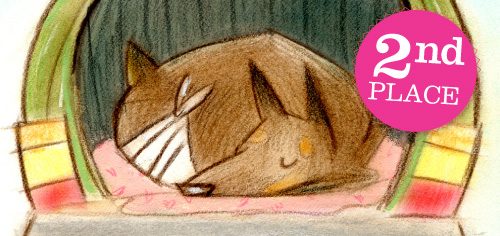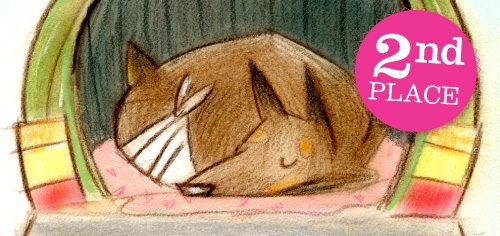

Jimmy Jazz
I met my dog in the summer of 1981 on the road going from Denver to Boulder, Colorado. Right next to the Lakeside Amusement Park, a car in the lane next to mine hit a dog, knocking him in front of my car.
I met my dog in the summer of 1981 on the road going from Denver to Boulder, Colorado. Right next to the Lakeside Amusement Park, a car in the lane next to mine hit a dog, knocking him in front of my car. We both pulled over into the center turn lane and the female passenger from the other car tried to pick the dog up, urging him “Run home, puppy, run home!”
I could see that this dog, who was full grown and large, was not going anywhere. He couldn’t stand up. So, I struggled to lift him myself and flung him into my back seat and headed on down the road looking for a pay phone that still had a phone book so I could locate an emergency vet.
The dog made not a sound as I found what I needed and headed
for a vet’s office not far from there. When I arrived, I studied the stoic dog in the back of my car. He was a beautiful deep, two-
tone red with floppy ears and a head shaped sort of like a bicycle seat. He was wearing no collar.
“What kind of dog is this?” I asked the vet as he came out to help me bring the dog inside. “He looks like a full-blood Doberman,” he told me. I stepped back. Doberman Pinschers were the Pit Bull Terriers of the 1980s. A lovely breed vilified in urban legend, it was said that their brains grew faster than their skulls, making them mean, and that they would turn on their owners. But already I instinctively knew that this dog would never do anything remotely like that. Surely, if he was mean, he would have bitten me when I picked him up. In my heart, I already hoped that, if he lived, I would be able to keep him.
The dog lived through the night and amazingly proved to have no internal injuries, but his right hip bone was shattered. The vet told me I had several options: do nothing, do expensive, questionable
surgery involving pins, screws, and plates, or put the dog under anesthesia and rearrange the bone fragments so that they might heal in a more natural manner. I opted for this last course of action and placed an ad in the Rocky Mountain News to see if any one was missing a dog running loose in northwest Denver.
Two days later, I paid the vet bill, brought the dog home and prayed that no one would answer that ad. After several weeks, no one had, and the dog had finally stopped looking around as if he was waiting for someone. I named him Jimmy Jazz after a song by The Clash and he became my true best friend.
In spite of a slight permanent limp, he ran beside my bicycle and protected me in my not-so-nice neighbourhood when we walked at night. He accepted first one grey kitten and then another,
yellow, one into the family and often slept on the bed with them. When I got married, he moved gracefully from sleeping at the foot of my bed to a large basket next to it. Jimmy only had to be told something once and he would understand. Years later, after my divorce and when Jimmy was, of course, long gone, I thought of him and wished he were still here so I could have him sleep at the foot of my bed again.
When my first son came along, Jimmy would roll on his back in the grass as the baby crawled beside him. But by the time my second son was born, Jimmy was older and would watch from the shade as the children played. After diabetes, although treated, had taken a toll on his body, and I had prolonged the inevitable for about a month longer than reason dictated, I took my best friend to the vet for his final rest. Now, after almost thirty years as I remember, I realize how fortunate
I was to be in that place at that time so we could meet in that way. Jimmy Jazz, my accidental best friend.
Join the newsletter and never miss out on dog content again!
"*" indicates required fields
By clicking the arrow, you agree to our web Terms of Use and Privacy & Cookie Policy. Easy unsubscribe links are provided in every email.